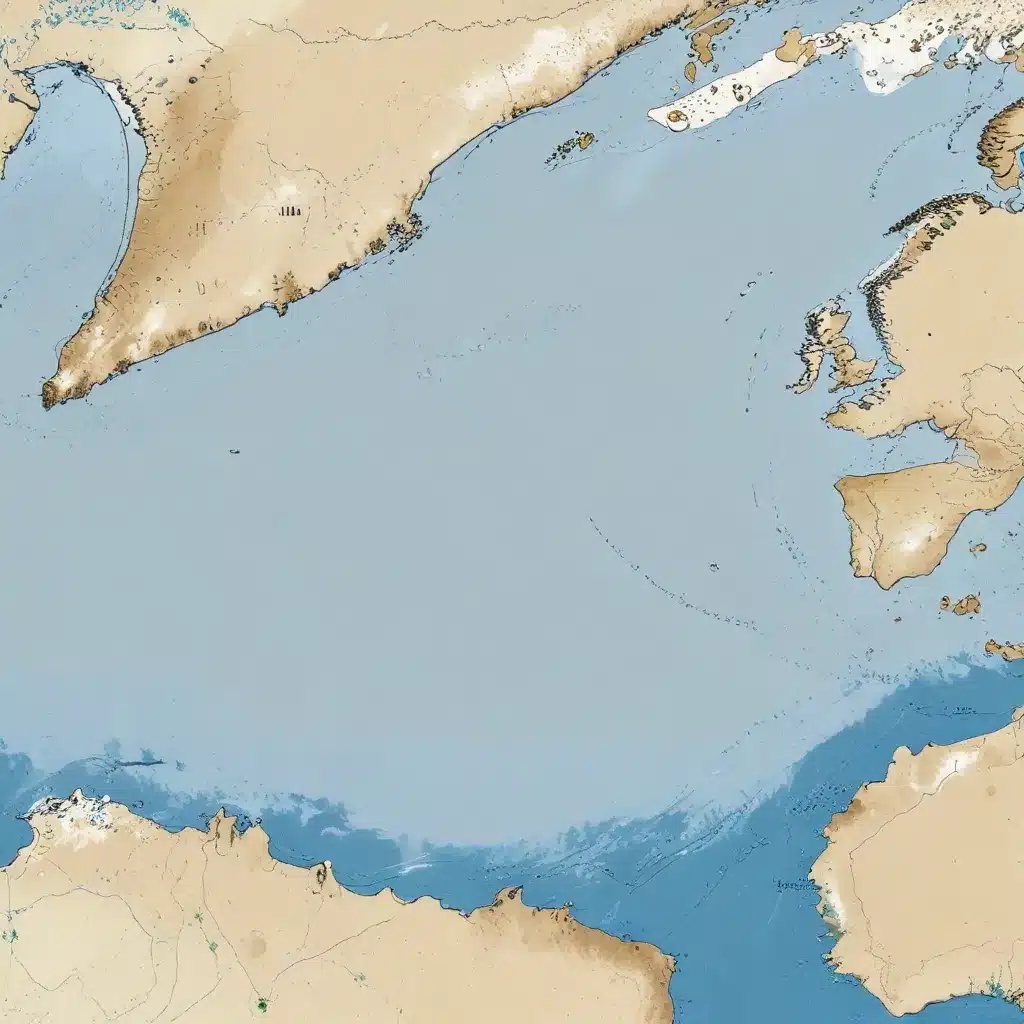
Intricate Interplay between the Kuroshio Extension and Subtropical Mode Water Formation
North Pacific subtropical mode water (NPSTMW) is a critical component of the ocean’s thermal structure, playing a pivotal role in regional and global climate dynamics. Formed as a low-stratification water mass in the wintertime mixed layer south of the Kuroshio Extension (KE), NPSTMW acts as a memory bank, storing and transporting heat, nutrients, and dissolved gases across vast distances and timescales.
Recent studies have uncovered an intriguing anomaly in NPSTMW formation and volume, even as the KE jet maintains a persistent stable state. Analysis of high-resolution Argo float observations reveals that the mean volume of NPSTMW in the ventilation region dropped anomalously by approximately 21% during 2018-2021, compared to the 2012-2015 period when the KE jet was likewise in a stable configuration.
Shifting Tides: The Kuroshio Extension and NPSTMW Variability
The KE jet is a powerful western boundary current that separates from the Japanese coast near 35°N and flows eastward, forming a prominent oceanic frontal system. Its dynamical state – oscillating between stable and unstable regimes – has long been recognized as a key driver of NPSTMW variability on interannual to decadal timescales.
During periods when the KE jet is in a stable state, the mixed layer depth (MLD) in the NPSTMW formation region tends to be deeper, enabling more efficient subduction and formation of the mode water. Conversely, an unstable KE jet, characterized by enhanced eddy activity, inhibits the development of a deep mixed layer, hindering NPSTMW formation.
Intriguingly, the recent decline in NPSTMW volume occurred despite the KE jet maintaining a stable configuration throughout 2018-2021. This suggests that factors beyond the local KE dynamics must be at play, prompting a closer examination of the broader atmospheric and oceanic conditions influencing NPSTMW formation.
Anomalous Atmospheric Forcing and the NPSTMW Decline
The authors’ analysis points to a significant shift in large-scale atmospheric patterns as the primary driver behind the recent NPSTMW volume decline. Specifically, they found that the anomalously shallow wintertime MLD and reduced heat loss in the NPSTMW formation region were closely linked to changes in the overlying atmospheric circulation.
Poleward Shift of the Westerlies
During 2018-2021, when the NPSTMW volume decreased, the authors observed a poleward shift of the westerly winds over the North Pacific. This shift in the wind patterns led to weaker wintertime winds and the development of easterly wind anomalies over the NPSTMW formation region.
The reduced wind stress and resultant weakening of the air-sea heat exchange acted to shallow the MLD, hampering the convective overturning and subduction processes that are crucial for NPSTMW formation. Furthermore, the easterly wind anomalies drove a northward Ekman transport of the shallower, lighter mixed layer waters, further inhibiting the development of the dense NPSTMW variety.
Pacific Decadal Oscillation (PDO) Shift
The authors found that the shift in the overlying atmospheric circulation was closely linked to a transition in the Pacific Decadal Oscillation (PDO) from a positive to a negative phase during the 2018-2021 analysis period. The PDO, a leading mode of North Pacific climate variability, is known to exert a strong influence on the basin-scale wind patterns and, consequently, the state of the KE and NPSTMW formation.
When the PDO shifted to its negative phase in 2018, the associated changes in the wind stress field appeared to play a dominant role in driving the interannual variability of NPSTMW, overriding the typical response to the KE’s dynamic state. The poleward shift of the westerlies and the development of easterly wind anomalies in the NPSTMW formation region were the primary mechanisms linking the PDO transition to the observed decline in NPSTMW volume.
Implications for Regional Climate and Biogeochemical Cycles
The reduction in NPSTMW formation and subduction has far-reaching implications for regional climate, ocean circulation, and biogeochemical processes. As a key component of the North Pacific subtropical gyre, changes in NPSTMW can influence the strength and position of the subtropical countercurrent, which, in turn, affects sea surface temperature patterns and local precipitation.
Moreover, NPSTMW is a significant sink for atmospheric carbon dioxide, transporting dissolved gases from the surface into the ocean interior. The observed decline in NPSTMW subduction may reduce the ocean’s capacity to absorb and sequester atmospheric CO2, potentially amplifying global warming trends.
The NPSTMW also plays a crucial role in nutrient cycling within the oligotrophic subtropical gyre, as the subducted waters transport essential nutrients to the deep ocean. Alterations in the NPSTMW formation and ventilation can, therefore, impact the regional biogeochemical processes and marine ecosystem productivity.
Unraveling the Complex Interplay
The authors’ findings highlight the intricate interplay between the ocean and atmosphere in shaping the variability of NPSTMW. While the KE jet’s dynamic state has long been recognized as a primary driver of NPSTMW formation, the recent anomaly demonstrates the importance of considering larger-scale atmospheric patterns, such as the PDO, in modulating the mode water’s behavior.
As the climate continues to evolve, understanding these complex ocean-atmosphere interactions will be crucial for predicting and adapting to the changing dynamics of the North Pacific subtropical gyre and the vital services it provides. The Air Cooled Heat Exchangers blog will continue to monitor and report on the latest research in this critical area, offering valuable insights for engineers, scientists, and industry professionals.
For more information on the latest advancements in air-cooled heat exchanger technology and its applications, please visit our website.

